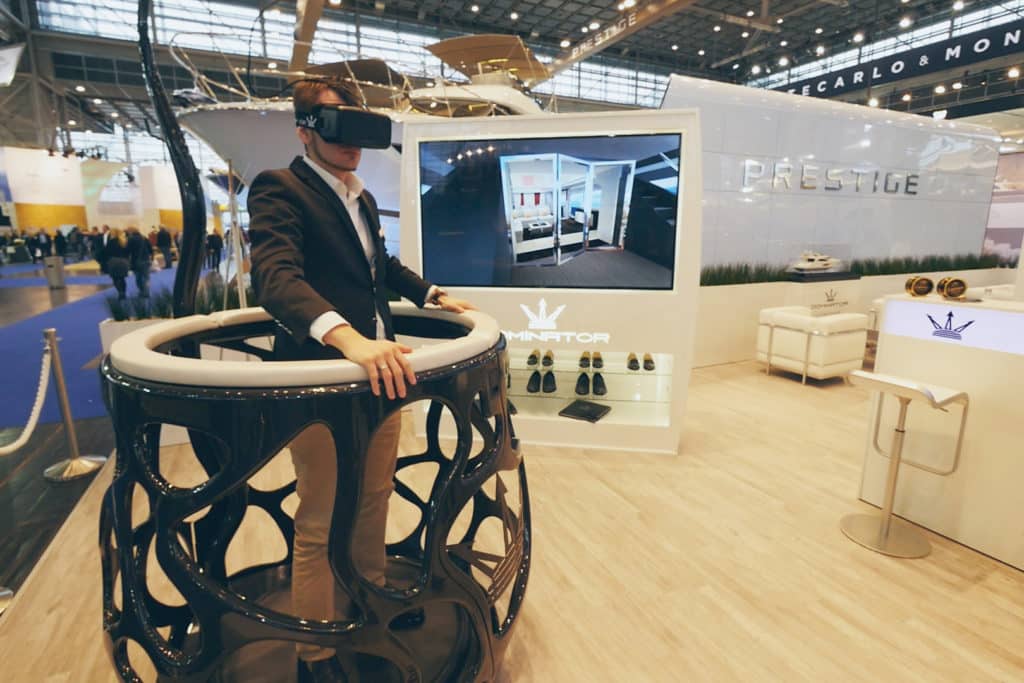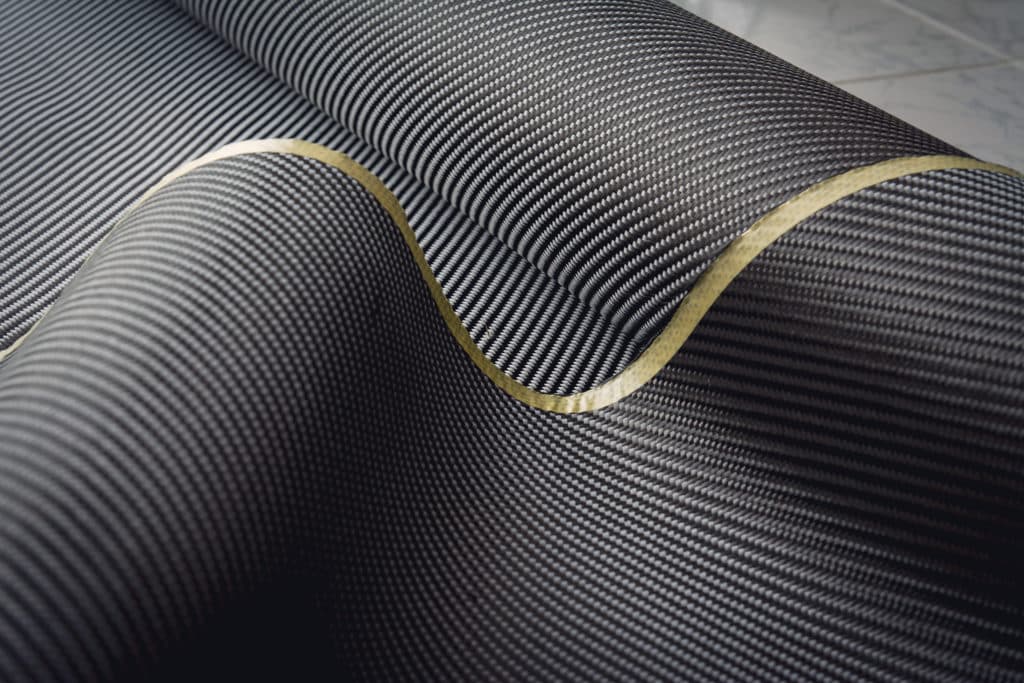
Right around the time I got into the marine industry, I read a news article about the Japanese company Obayashi Corp., which wanted to build an elevator to outer space. I haven’t followed that story, though I suspect the idea never got off the ground. (Sorry.) What I do remember from the article is the material the company was going to use to build the elevator: carbon fiber, quite literally one of the strongest things in the world (and maybe outside of it, one day).
Overnight, I began noticing carbon fiber on boats. More and more of that unmistakable black thatch started showing up places. Sometimes it wasn’t even real. People just wanted the look, like a faux fur lining on a coat. Carbon fiber was the new it.
“It’s a status thing for most,” says Chapman Ducote of Delta Powerboats Americas. “It just looks cool.”
Of course, it’s a hard sell to build a boat company on cool accents alone. As such, Delta is the only large production builder of entirely carbon-fiber boats. That’s right, entirely. And for Ducote, the tie to the material goes much deeper than aesthetics. “I am sitting here talking to you because of carbon fiber,” Ducote says as we relax in the cockpit of the Delta 88 off the Swedish resort town of Marstrand. “I am literally alive because of it.”

In his earlier years, Ducote was a race-car driver. Those drivers sit in carbon-fiber tubs to protect themselves from inevitable collisions. Ducote can point to one crash (in a career full of them) that would have done serious damage if not for carbon fiber. It was in 2007 in Atlanta, and on impact, the left side of his car disappeared in a maelstrom of high-speed violence. The usually unflappable Ducote recalls this event with wide eyes, his hand moving high on his face. It’s clear the crash remains palpable to him. Miraculously, he survived with just a concussion. The carbon-fiber tub saved him. Now you understand why the man traffics in the stuff. The passion runs deep.
So yes, carbon fiber is legendarily strong, but that’s only half the equation. It’s also crazy light. The Delta 88, at 84 feet 11 inches length overall, displaces a scant 90,000 pounds. Carbon Craft, the builder of carbon-fiber tenders, has an 11-foot-6-inch model that weighs 900 pounds. Nine hundred. You and your friend could pick that thing up off the ground, assuming you haven’t been skipping leg day at the gym.
And it’s not merely specialized, semi-production builders that are buying into carbon fiber. Some of the industry’s giants are seeing the light. Azimut, for example, has begun using carbon fiber in its builds, particularly the upper parts. Says Federico Lantero, Azimut’s brand manager: “The most recent Azimut 66 and 72 models combine two state-of-the-art construction techniques. The hull and the deck are made out of fiberglass, while the deckhouse and flybridge are made out of pure carbon fiber. This new production choice has enabled the new models to reduce the weight of the superstructures by approximately 30 percent compared to models with the same displacement made entirely out of fiberglass.”
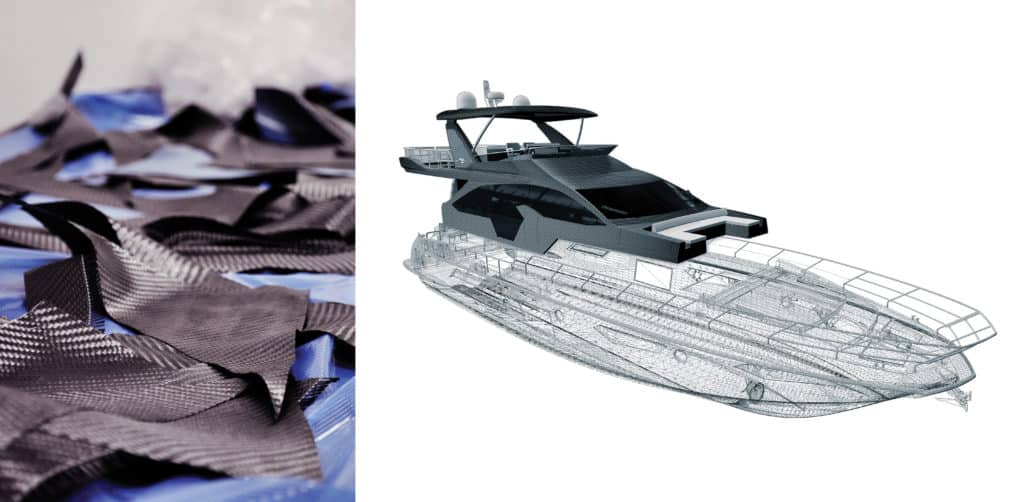
The advantages are obvious. For one, the boats’ center of gravity is lowered, for better seakeeping. Additionally, fuel efficiency improves as weight drops. Interior volume benefits too, from using lighter materials. Oh, and you get those must-have carbon-fiber accents that everybody loves, as a bonus. Not bad.
But the question is, why now? Where did this burgeoning use of carbon fiber originate? Ducote and Carbon Craft’s COO Steve French think people have simply started to come around to the viability of the material. The advantages are too difficult to deny. Rumors of the material’s supposed brittleness have also been dispelled. That’s a particular wives’ tale that has always gotten Ducote’s goat. “Brittle? Pfft,” he scoffs. “It’s the strongest stuff on Earth.”
The material’s famously high cost is also slowly but surely coming down. French sees this as a result of supply and demand. As the material has become more common in aerospace, more of it has trickled down into other industries, such as auto racing and, now, yachting. And that can only benefit boaters looking for fuel-efficient, strong and stylish yachts. Right now, as far as carbon fiber and boating goes, the sky’s the limit — and maybe, just maybe, even that isn’t optimistic enough.
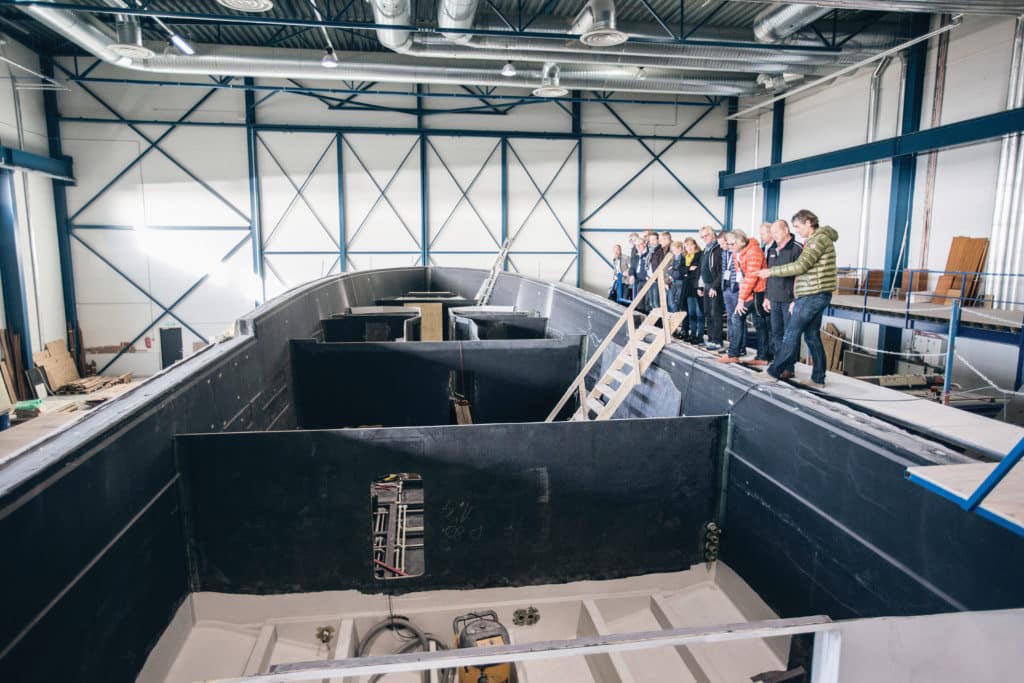
VIRTUAL INSANITY
To start with another anecdote, at a recent Miami International Boat Show, my colleague and I tried the virtual reality display by Italian builder Dominator Yachts. I slipped off my docksiders, put on the node-soled slippers, strapped on the goggles and stepped onto the concave discus that was part of the system. Voomph! I teleported from a bustling South Florida dock to a yacht floating peacefully on the surface of the Med — azure water, rocky coastline, everything. Not to be hyperbolic, but I was amazed. I hadn’t realized the technology had advanced so far.
I heard my co-worker call my name, and I snapped my head around, but all I saw in the voice’s direction was an expanse of saltwater. I whipped off the goggles and there he was, standing on the dock, surrounded by a gaggle of snickering yacht brokers. I was no longer alone in paradise, but I was genuinely intrigued.
Virtual reality has made great strides in recent years as a yacht-design tool. It’s possible, as the technology advances, that it could fully outmode those wooden models builders keep in their factories for owner walk-throughs, as well as other commonly accepted aspects of the boatbuilding process.
The technology has already gone beyond stylish Italian builders and Dutch mega-yacht designers.
Vripack, the Dutch design company, is one of the brands at the forefront of the virtual reality movement. As you might have guessed from the Dutch, there were three major motivations for the shift: efficiency, efficiency and — let me check my notes — efficiency.
Says Vripack’s design studio manager, Jeroen Droogsma: “We can put the virtual reality glasses on and see exactly what we will get. It’s absolutely more efficient. We see what you can do with space. Everything is designed in 3-D now. It’s old-fashioned to draw up a print. We are much more accurate than that, and that’s what we want.”

Yachting Tests VR at Yachts Miami Beach
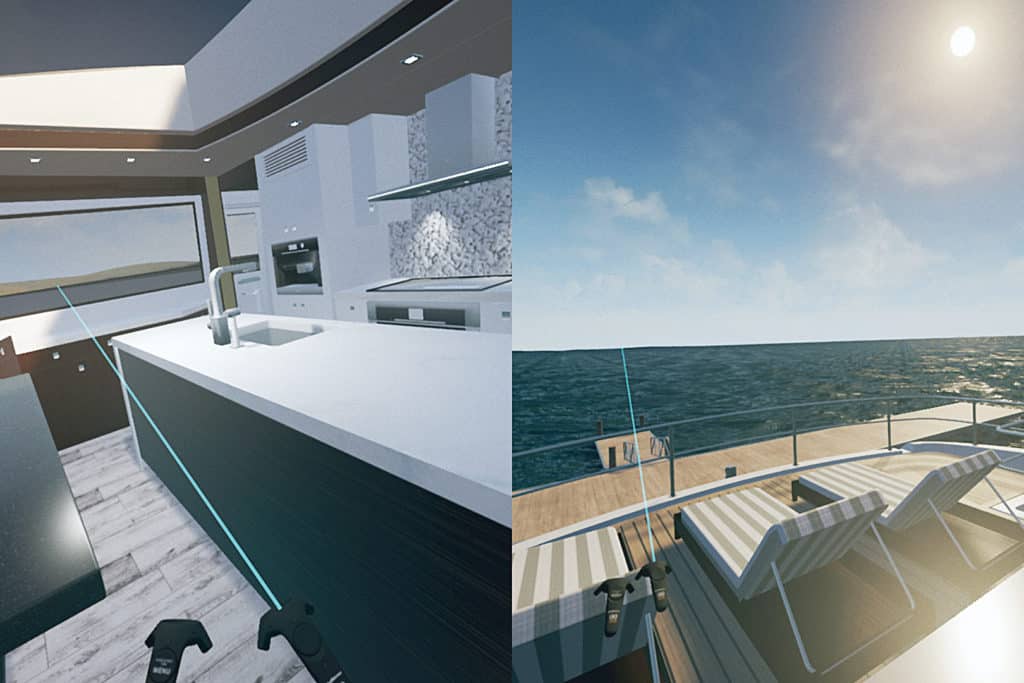
The technology has already gone beyond stylish Italian builders and Dutch mega-yacht designers. Right here in the U.S., technologically savvy builders are seeing the benefits of virtual reality. Hatteras Yachts, for example, had a display at the 2016 Fort Lauderdale International Boat Show, with wide-eyed customers filing in and out, their minds blown.
Hatteras sees using virtual reality as a natural progression for a brand that has been at the vanguard of production boat design since Willis Slane launched his first fiberglass sport-fisher. “We wanted to do a better job representing the Hatteras brand as the innovative and forward-thinking builder we’ve been since the very beginning,” says director of marketing Joe Cacopardo. “We searched around and found a suitable partner in [Maryland’s] High Rock Studios, who delivered an excellent product for us.”
In the Hatteras virtual reality system, users control a menu with their left hand while using their right to control a laser as they ask questions of designers. In this sense, Hatteras essentially lets you do a full boat tour without stepping foot aboard an actual boat. And that’s about as virtually real as it gets.
Make no mistake, the future is now. In terms of design, virtual reality has created a new plane on which to imagine the boats of tomorrow. And in carbon fiber, we see a space-age material that to many — including the thankful-to-be-alive Ducote and star-gazing Obayashi Corp. — seems to be a gift from the heavens.
Where this embarrassment of manna leads is anyone’s guess, but it can surely only be a good thing.
